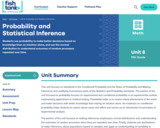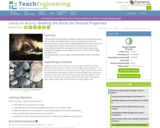
A narrated introduction to the seven characteristics of living things. [1:12]
- Subject:
- Science
- Material Type:
- Audio/Video
- Provider:
- Sophia Learning
- Date Added:
- 12/01/2023

A narrated introduction to the seven characteristics of living things. [1:12]

Biology 2e is designed to cover the scope and sequence requirements of a typical two-semester biology course for science majors. The text provides comprehensive coverage of foundational research and core biology concepts through an evolutionary lens. Biology includes rich features that engage students in scientific inquiry, highlight careers in the biological sciences, and offer everyday applications. The book also includes various types of practice and homework questions that help students understand—and apply—key concepts. The 2nd edition has been revised to incorporate clearer, more current, and more dynamic explanations, while maintaining the same organization as the first edition. Art and illustrations have been substantially improved, and the textbook features additional assessments and related resources.


By the end of this section, you will be able to do the following:
Explain the relationship between genotypes and phenotypes in dominant and recessive gene systems
Develop a Punnett square to calculate the expected proportions of genotypes and phenotypes in a monohybrid cross
Explain the purpose and methods of a test cross
Identify non-Mendelian inheritance patterns such as incomplete dominance, codominance, recessive lethals, multiple alleles, and sex linkage

By the end of this section, you will be able to do the following:
Describe the scientific reasons for the success of Mendel’s experimental work
Describe the expected outcomes of monohybrid crosses involving dominant and recessive alleles
Apply the sum and product rules to calculate probabilities

A podcast tutorial describing the main characteristics of matter. [1:02]

The Dinosaur Museum is located in Blanding, Utah. Use this site to learn all about the exhibits and dinosaur information.

Students investigate the difference between qualitative and quantitative measurements and observations. By describing objects both qualitatively and quantitatively, they learn that both types of information are required for complete descriptions. Students discuss the characteristics of many objects, demonstrating how engineers use both qualitative and quantitative information in product design.

Students explore the biosphere and its associated environments and ecosystems in the context of creating a model ecosystem, learning along the way about the animals and resources. Students investigate different types of ecosystems, learn new vocabulary, and consider why a solid understanding of one's environment and the interdependence of an ecosystem can inform the choices we make and the way we engineer our communities. This lesson is part of a series of six lessons in which students use their growing understanding of various environments and the engineering design process, to design and create their own model biodome ecosystems.

Students use probability to make better decisions based on knowledge than on intuition alone, and use the normal distribution to understand outcomes of random processes repeated over time.

Student teams assign importance factors, called "desirability points," the rock properties found in the previous lesson/activity in order to mathematically determine the overall best rocks for building caverns within. They learn the real-world connections and relationships between the rock and the important engineering properties for designing and building caverns (or tunnels, mines, building foundations, etc.).

Students test rocks to identify their physical properties (such as luster, hardness, color, etc.) and classify them as igneous, metamorphic or sedimentary. They complete a worksheet table to record all of the rock properties, and then answer worksheet questions to deepen their understanding of rock properties and relate them to the cavern design problem.

What is a reptile? Use this resource to understand the basic facts of all reptiles and click to detailed information on many specific types.

Smithsonian Education presents Reviled and Revered: Toads, Turtles, Snakes, Salamanders, and Other Creepers and Crawlers. Get the facts about reptiles and amphibians. Learn about their unique characteristics, as well as explore why we love or hate them. Students will appreciate the excellent photographs and background information. Teachers will love the series of five lesson plans, complete with student handouts, discussion questions, lesson extensions, curriculum standards, and a resource list.